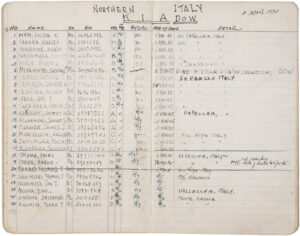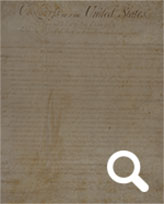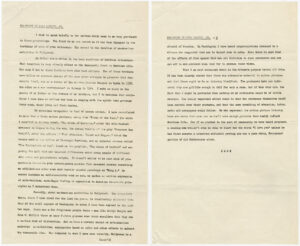Featured Records
The Purple Heart Battalion
Tuesday, April 16, 2024 – Wednesday, May 15, 2024
East Rotunda Gallery
The 442nd Regimental Combat Team
None of us thought we were coming home alive. —Lawson Sakai
Following Japan’s attack on Pearl Harbor in 1941, the Roosevelt administration required people of Japanese descent living on the West Coast to leave their homes and live in camps. 2,100 of the relocated citizens volunteered for military service. Together with Japanese American soldiers from Hawaii, they formed the 442nd Regimental Combat Team.
The 442nd fought in seven major European military campaigns. Dubbed the “Purple Heart Battalion,” it is the most decorated American military unit for its size and length of service. The unit received more than 18,000 individual decorations, including 21 Medals of Honor, more than 4,000 Purple Hearts, and the Congressional Gold Medal.

This pocket log was used to keep a record of the Japanese American infantrymen who were killed in action or died of wounds. In all, the 442nd suffered almost 10,000 casualties and 600 deaths.
Pocket Log of 442nd Infantry Killed In Action and Died of Wounds
National Archives, Records of the Adjutant General’s Office
View in National Archives Catalog
The Featured Document Display is made possible in part by the National Archives Foundation through the generous support of Verizon.
For more information, click here.
Past Featured Records
-
Frances Perkins: Champion of Workers’ Rights
Thursday, February 29, 2024 – Monday, April 15, 2024
East Rotunda Gallery“I came to Washington to work for God, FDR, and the millions of forgotten plain common workingmen.” —Frances Perkins
Chances are you benefit from the legacy of Frances Perkins,... Read more
70th Anniversary of Brown v. Board of Education of Topeka
Thursday, February 1, 2024 – Wednesday, February 28, 2024
East Rotunda GalleryEquity in Education: 70 Years Later
On May 17, 1954, the Supreme Court delivered a unanimous ruling in Brown v. Board of Education of Topeka that “separate but equal” was unconstitutional in... Read more
250th Anniversary of the Boston Tea Party
Thursday, December 14, 2023 – Wednesday, January 31, 2024East Rotunda GalleryThe Destruction of the Tea
It wouldn’t be known as the “Boston Tea Party” for another 50 years, but the destruction... Read more
Diseños: An Impact of Mexican Cession
Tuesday, June 20, 2023 – Wednesday, October 18, 2023
East Rotunda GalleryAt the end of the Mexican-American War, the United States annexed more than half of Mexico’s territory under the 1848 Treaty of Guadalupe Hidalgo. Under its terms, the U.S. promised to... Read more
Celebrating Anna May Wong
Anna May Wong
National Archives, Records of the Immigration and Naturalization Service“I want to be an actress, not a freak.”
Film legend Anna May Wong’s talent could not be contained by the racist casting of early Hollywood movies. Born Wong Liu Tsong in Los Angeles in 1905,... Read more
The Maker of Pilots: Willa B. Brown
Willa B. Brown, February 13, 1943
National Archives, Records of the Office of War InformationAviator Willa Beatrice Brown (1906–92) achieved numerous “firsts” in her lifetime, many of them earned through her tireless advocacy to integrate aviation programs. Brown began taking flying lessons in 1934,... Read more
Courting Confrontation: The Arrest of Susan B. Anthony
Thursday, November 3, 2022 – Thursday, January 12, 2023East Rotunda GalleryOn November 5, 1872, Susan B. Anthony and 14 other women attempted to vote in Rochester, New York, challenging section... Read more
Featured Document Display: Remembering the Hollywood 10: Screenwriter Ring Lardner, Jr.
Thursday, September 8, 2022 – Wednesday, November 2, 2022
East Rotunda GalleryEarly in the Cold War, the House Un-American Activities Committee (HUAC) investigated allegations of Communist activity in the film industry. The committee’s mandate was... Read more
Black Wall Street: 100 Years Since the Tulsa Race Massacre
Thursday, April 1, 2021 – Thursday, June 17, 2021
Online“— were dead. Figures are omitted [because] NO ONE KNOWS.” —Red Cross Report
On Memorial Day 1921, a Black shoe shiner named Dick Rowland rode in an elevator with white operator Sarah Page. The next day,... Read moreVictory in Japan: 75th Anniversary of the End of WWII
Japan Surrenders
World War II, the bloodiest conflict in history, came to an end in a 27-minute ceremony on board the USS Missouri in Tokyo Bay, six years and one day after the war erupted in Europe. On that September morning in 1945, Japanese officials signed a... Read more











